Visitors to Florence this summer should keep an eye out for special events in special places.
Update (9/11/09):
Patti Smith came back to town this past week for her i. was in Florence tour – a tour limited to the city limits, including unannounced stops to sing on street corners and small piazzas. She spoke to a large group of NYU students at Villa La Pietra and rocked the house in the Salone dei Cinquecento in the Palazzo Vecchio where, to an invitation-only crowd, she recited Ginzberg’s footnote to Howl – Holy, Holy, Holy (a glance at the lyrics makes clear that this grand Renaissance hall had never heard the like before). The frescoed walls and Michelangelo’s statue quaked as she belted out People Have the Power, backed by guitarists Lenny Kaye and Tom Verlaine.
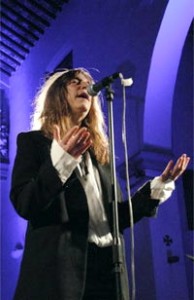
The three, joined by a bass player and drummer, appeared the next night in front of 50,00 people, framed by the facade of the church of Santa Croce for a return concert – exactly 30 years after her 9/10/79 appearance, of which she has said, “At least once a day, every day since September 10th, 1979, I think about that memorable concert, probably the best, without doubt the most powerful of my whole artistic career.”
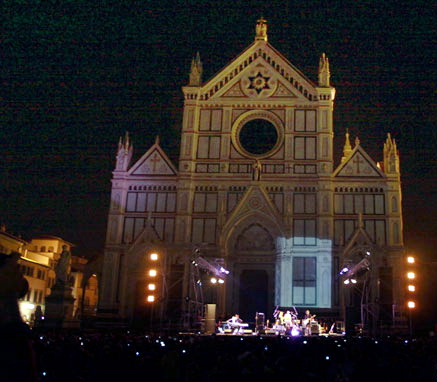
Patti Smith performed to a packed house at the feet of David
This past Sunday (May 24), Patti Smith rushed to Florence from the wedding of her son Jackson (to Meg White of the White Stripes) to honor her friend Robert Mapplethorpe at a benefit for AIDS/HIV at the Accademia.
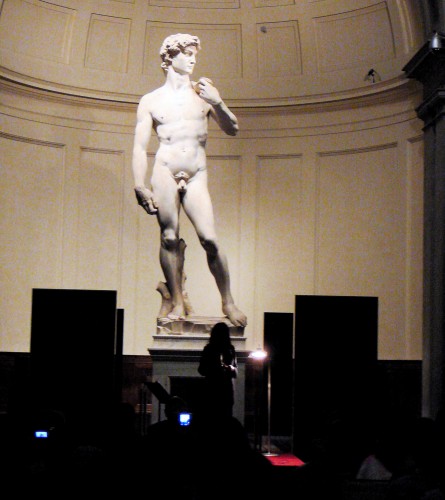
Although few in the audience actually saw Smith, who stood in the deep shadows at the feet of the David, no one went away unhappy after her superb performance.
She talked about her first evening with Mapplethorpe when they poured over a book of Michelangelo’s sculptures and the nascent photographer wondered if he would ever see his own work in such a book. Smith described his encouragement of her singing and the impact of his death from complications of AIDS twenty years ago on May 22, 1989.
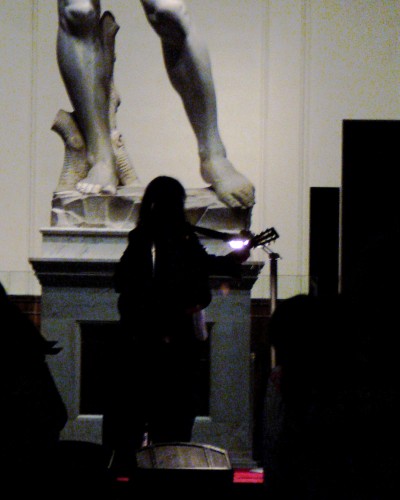
She recited Sonnets by Michelangelo, Psalms of David, her own poetry and sang a choice selection of her songs, either a cappella or accompanying herself on guitar. At one point she forgot some lyrics and gracefully blamed it on the awe she felt for the marble giant standing behind her. Highlights included her recitation of “People Have the Power” and the show-stopping “Because the Night Belongs to Lovers” that brought the audience to its feet, singing along.
Mapplethorpe and Michelangelo together for the first time
This week the Galleria dell’Accademia opens a new exhibit “Perfection in Form” juxtaposing photographic images by Robert Mapplethorpe to some of the most iconic Renaissance pieces in the world – Michelangelo’s David and the four non finiti Prisoners. The two artists seem to engage in a dialogue beyond time, space, and cultures.
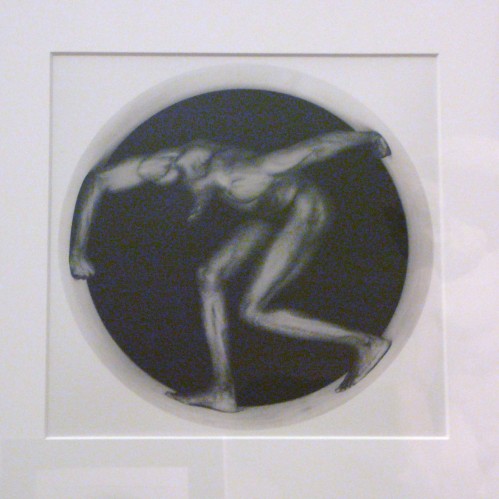
“My work is about order”, Mapplethorpe once said,adding, “I am looking for perfection in form”. Michelangelo would have understood the sentiment.
The 91 works by Mapplethorpe are joined by several pieces by Michelangelo (four drawings and a sketch, in addition to the David, the four Prisoners and the painting Venus and Cupid) and the plaster model of the Rape of the Sabine Women by Giambologna. The exhibition is completed by works by artists that Mapplethorpe referenced throughout the course of his life and work (Brice Marden, Man Ray, Ettore Spalletti and Andy Warhol).
The Slave – Mapplethorpe’s homage to Michelangelo
Mapplethorpe’s double photograph with a knife, entitled “The Slave” (1974), is of a Michelangelo sculpture that is not in Florence, but rather resides in the Louvre in Paris, where it is known as “The Dying Slave.”
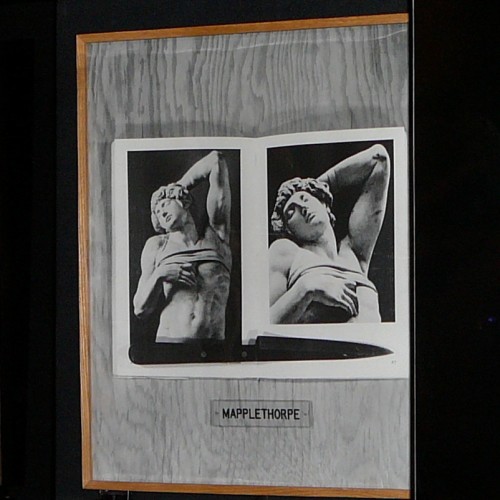
One of two such sculptures in the Louvre, the Dying Slave was included in the design (1505) for the initial project for the tomb of Pope Julius II. Michelangelo began to carve it in 1513. After the pope’s death, it, among others, was rejected for financial reasons. Similar figures, including the four marble Prisoners in the Accademia of Florence – carved and also left incomplete (non finiti) in 1532 – had been part of the original design for the grandiose tomb. Julius II, who had dreamed of a freestanding mausoleum at Saint Peter’s in Rome, was buried in San Pietro in Vincoli in a wall tomb, adorned with one grand statue – Michelangelo’s famous Moses.
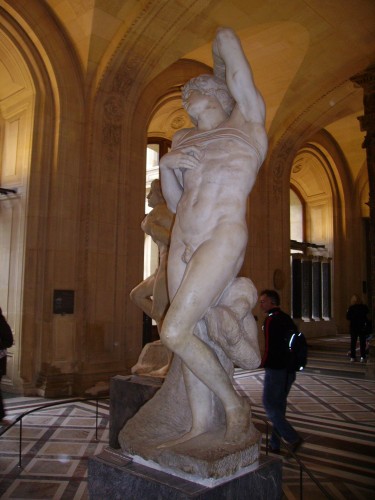
Despite being unfinished, the two great marble Slaves were already admired. Michelangelo donated them to the Florentine exile Roberto Strozzi, who presented them to the French king. The Slaves thus reached France during the sculptor’s lifetime, and first occupied two niches at the Château d’Ecouen before Cardinal de Richelieu took them to his château in Poitou.
Perfection in Form – the Exhibit
The Galleria dell’Accademia, known to accompany it’s drawing card, the David, with good exhibits in the past, has outdone itself with the Mapplethorpe show – Perfection in Form. Patti Smith, reportedly, helped select the photographic images created by the artist.
The exhibit runs from May 26, 2009 to mid-January, 2010.
